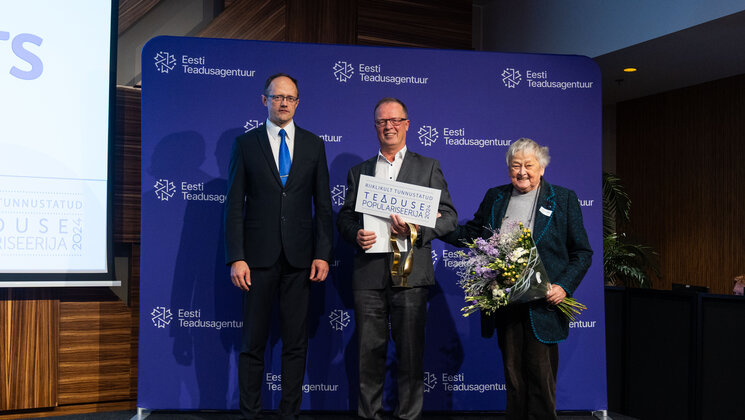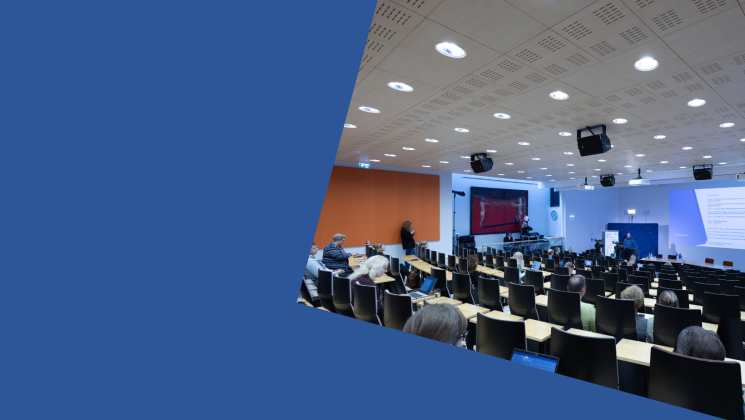-
Faculty of Arts and HumanitiesDean's Office, Faculty of Arts and HumanitiesJakobi 2, r 116-121 51005 Tartu linn, Tartu linn, Tartumaa EST0Institute of History and ArchaeologyJakobi 2 51005 Tartu linn, Tartu linn, Tartumaa EST0Institute of Estonian and General LinguisticsJakobi 2, IV korrus 51005 Tartu linn, Tartu linn, Tartumaa EST0Institute of Philosophy and SemioticsJakobi 2, III korrus, ruumid 302-337 51005 Tartu linn, Tartu linn, Tartumaa EST0Institute of Cultural ResearchÜlikooli 16 51003 Tartu linn, Tartu linn, Tartumaa EST0Institute of Foreign Languages and CulturesLossi 3 51003 Tartu linn, Tartu linn, Tartumaa EST0School of Theology and Religious StudiesÜlikooli 18 50090 Tartu linn, Tartu linn, Tartumaa EST0Viljandi Culture AcademyPosti 1 71004 Viljandi linn, Viljandimaa EST0Professors emeriti, Faculty of Arts and Humanities0Associate Professors emeriti, Faculty of Arts and Humanities0Faculty of Social SciencesDean's Office, Faculty of Social SciencesLossi 36 51003 Tartu linn, Tartu linn, Tartumaa EST0Institute of EducationJakobi 5 51005 Tartu linn, Tartu linn, Tartumaa EST0Johan Skytte Institute of Political StudiesLossi 36, ruum 301 51003 Tartu linn, Tartu linn, Tartumaa EST0School of Economics and Business AdministrationNarva mnt 18 51009 Tartu linn, Tartu linn, Tartumaa EST0Institute of PsychologyNäituse 2 50409 Tartu linn, Tartu linn, Tartumaa EST0School of LawNäituse 20 - 324 50409 Tartu linn, Tartu linn, Tartumaa EST0Institute of Social StudiesLossi 36 51003 Tartu linn, Tartu linn, Tartumaa EST0Narva CollegeRaekoja plats 2 20307 Narva linn, Ida-Virumaa EST0Pärnu CollegeRingi 35 80012 Pärnu linn, Pärnu linn, Pärnumaa EST0Professors emeriti, Faculty of Social Sciences0Associate Professors emeriti, Faculty of Social Sciences0Faculty of MedicineDean's Office, Faculty of MedicineRavila 19 50411 Tartu linn, Tartu linn, Tartumaa ESTInstitute of Biomedicine and Translational MedicineBiomeedikum, Ravila 19 50411 Tartu linn, Tartu linn, Tartumaa ESTInstitute of PharmacyNooruse 1 50411 Tartu linn, Tartu linn, Tartumaa ESTInstitute of DentistryL. Puusepa 1a 50406 Tartu linn, Tartu linn, Tartumaa ESTInstitute of Clinical MedicineL. Puusepa 8 50406 Tartu linn, Tartu linn, Tartumaa ESTInstitute of Family Medicine and Public HealthRavila 19 50411 Tartu linn, Tartu linn, Tartumaa ESTInstitute of Sport Sciences and PhysiotherapyUjula 4 51008 Tartu linn, Tartu linn, Tartumaa ESTProfessors emeriti, Faculty of Medicine0Associate Professors emeriti, Faculty of Medicine0Faculty of Science and TechnologyDean's Office, Faculty of Science and TechnologyVanemuise 46 - 208 51003 Tartu linn, Tartu linn, Tartumaa ESTInstitute of Computer ScienceNarva mnt 18 51009 Tartu linn, Tartu linn, Tartumaa ESTInstitute of GenomicsRiia 23b/2 51010 Tartu linn, Tartu linn, Tartumaa ESTEstonian Marine Institute0Institute of PhysicsInstitute of ChemistryRavila 14a 50411 Tartu linn, Tartu linn, Tartumaa EST0Institute of Mathematics and StatisticsNarva mnt 18 51009 Tartu linn, Tartu linn, Tartumaa EST0Institute of Molecular and Cell BiologyRiia 23, 23b - 134 51010 Tartu linn, Tartu linn, Tartumaa ESTTartu ObservatoryObservatooriumi 1 61602 Tõravere alevik, Nõo vald, Tartumaa EST0Institute of TechnologyNooruse 1 50411 Tartu linn, Tartu linn, Tartumaa ESTInstitute of Ecology and Earth SciencesJ. Liivi tn 2 50409 Tartu linn, Tartu linn, Tartumaa ESTProfessors emeriti, Faculty of Science and Technology0Associate Professors emeriti, Faculty of Science and Technology0Institute of BioengineeringArea of Academic SecretaryHuman Resources OfficeUppsala 6, Lossi 36 51003 Tartu linn, Tartu linn, Tartumaa EST0Area of Head of FinanceFinance Office0Area of Director of AdministrationInformation Technology Office0Administrative OfficeÜlikooli 17 (III korrus) 51005 Tartu linn, Tartu linn, Tartumaa EST0Estates Office0Marketing and Communication OfficeÜlikooli 18, ruumid 102, 104, 209, 210 50090 Tartu linn, Tartu linn, Tartumaa EST0Area of Vice Rector for DevelopmentCentre for Entrepreneurship and InnovationNarva mnt 18 51009 Tartu linn, Tartu linn, Tartumaa EST0University of Tartu Natural History Museum and Botanical GardenVanemuise 46 51003 Tartu linn, Tartu linn, Tartumaa EST0International Cooperation and Protocol Office0University of Tartu MuseumLossi 25 51003 Tartu linn, Tartu linn, Tartumaa EST0Area of RectorRector's Strategy OfficeInternal Audit OfficeArea of Vice Rector for Academic AffairsOffice of Academic AffairsUniversity of Tartu Youth AcademyUppsala 10 51003 Tartu linn, Tartu linn, Tartumaa EST0Student Union OfficeÜlikooli 18b 51005 Tartu linn, Tartu linn, Tartumaa EST0Centre for Learning and TeachingArea of Vice Rector for ResearchUniversity of Tartu LibraryW. Struve 1 50091 Tartu linn, Tartu linn, Tartumaa EST0Grant Office
Guest seminar: "Human evolution through the lens of gene regulation" with dr. David Gokhman
On Thursday, October 17, at 11.00 a.m., a guest seminar on "Human evolution through the lens of gene regulation" will take please in the Institute of Genomics at the University of Tartu (Riia 23b, room 105) by Dr David Gokhman from the Weizmann Institute of Science in Israel.
David Gokhman is a trained evolutionary biologist. He did his undergraduate studies in chemistry and biology, as well as his MSc and PhD at the Department of Genetics at the Hebrew University of Jerusalem. David conducted a postdoc at Stanford University after which he joined the faculty of the Weizmann Institute in 2021. His research group focuses on the analysis of how gene expression regulation shaped human evolution and disease, by comparative approaches with our closest extinct (such as Neandertals and Densiovans) and living (such as chimpanzees and other great apes) relatives. He is visiting the Institute of Genomics as the opponent for the PhD defense of Danat Yermakovich
Abstract of the guest seminar:
Changes to gene regulation are key drivers of human evolution. However, our understanding of which regulatory changes shaped human adaptations, and how, remains extremely limited. Here, we employed massively parallel reporter assays in skeletal, adipose, skin, and neural cells to uncover the functional effect of each of the 71,443 variants distinguishing Neanderthals and Denisovans from modern humans, as well as the 541,851 variants distinguishing all human lineages from other great apes. We found that 15% of the variants arose in active enhancers and promoters, and that 20% of them altered human expression levels. To identify the genes affected by these expression-altering variants, we generated human-chimp hybrid cells, a powerful system to detect expression differences driven in cis by nearby variants. Synergizing these approaches, we found three body parts that likely experienced unique selective pressures: the face, vocal tract, and cerebellum. Interestingly, we detected several examples of convergent evolution between modern and archaic humans. For example, both lineages completely silenced the activity of an enhancer of KDM8, a gene involved in tumor progression, but archaic humans achieved this through motif disruption, while modern humans achieved this through hypermethylation. Finally, we focused on two regions, and using CRISPR/Cas9 and mouse models, we discovered that they likely played a key role in shaping human-specific traits. These include a single-nucleotide substitution that doubled the expression of EVC, a key regulator of facial development, and a variant that silenced IRF4, a regulator of skin pigmentation. Overall, this work synergizes two powerful systems – reporter assays and human-chimp hybrids – to generate the first catalog of functionally important noncoding variants in deep and recent human evolution, and to elucidate their role in human adaptations.
You can also join the seminar via Zoom
Join Zoom Meeting
https://ut-ee.zoom.us/j/99789590450?pwd=la9SvIlGsMam7kUnjg022H07JGFAW3.1
Meeting ID: 997 8959 0450
Passcode: 644413
Guest seminar: "Human evolution through the lens of gene regulation" with dr. David Gokhman

Toivo Maimets received the Tiiu Sild memorial lifetime achievement award

Mark your calendar: MRI and GI Annual Conference on 15-16 January

